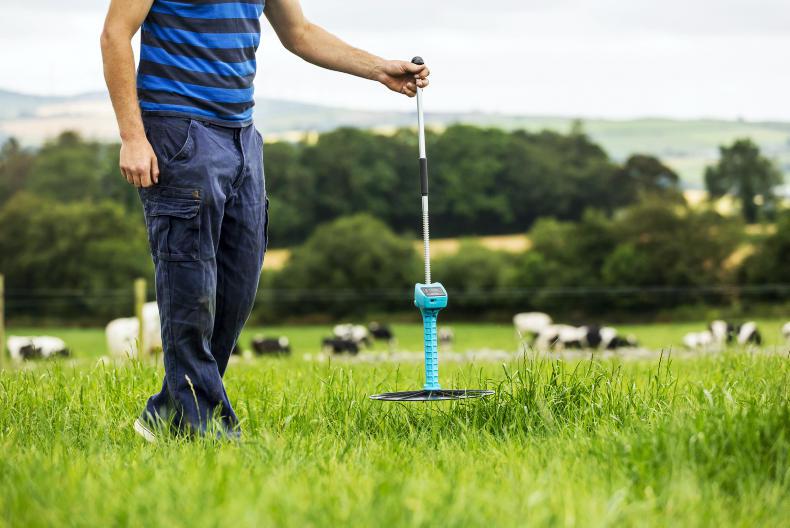Rainfall amounts over the past few days vary from parish to parish as severe thunderstorms brought very heavy rain to some parts while other areas avoided them.
The rains brought an end to the prolonged dry spell and went some way towards addressing some of the soil moisture deficits.
However, it must be remembered that if a soil moisture deficit was 50mm greater than normal, then 20mm means that the soil moisture deficit is still around 30mm greater than normal.
Plus, if the rain came very fast, a proportion of the rain is likely to have ran off the surface of land, as opposed to seeping through soil.
So, what I’m saying is that we need more and regular rain to make sure we don’t dip back into a drought scenario.
Steps
The first thing every farmer should do is walk their farm to assess grass covers and grass quality. A lot of farmers have a lot of poor quality grass on their farm.
This is as a result of carrying higher covers, longer rotation lengths and grass getting stress due to drought. If average farm cover is well above 180kg/cow and growth is higher than demand then there should be an opportunity to cut out some of these poor quality paddocks.
The next thing to do is to reduce concentrate feeding where there is sufficient grass. It doesn’t make sense to be feeding high levels of supplement when the farm has loads of grass.
Farms that have low grass covers, i.e. anything less than 160kg/cow should continue to supplement with meal and or silage until such time that average farm cover increases.
We would expect a big lift in grass growth rates over the coming days as there is heat and moisture in most soils.
If fertiliser hasn’t been spread for a few weeks, now would be a good time to go back spreading. Paddocks that haven’t been spread in weeks can be blanket spread with 15 to 20 units/acre.
There will be some background nitrogen in the soil and there will also be unused nitrogen from previous applications so nitrogen won’t be lacking much anyway.
Read more
Schemes update: reminder on new nitrates derogation requirements
Glanbia holds May milk price as markets are ‘delicately balanced’
Rainfall amounts over the past few days vary from parish to parish as severe thunderstorms brought very heavy rain to some parts while other areas avoided them.
The rains brought an end to the prolonged dry spell and went some way towards addressing some of the soil moisture deficits.
However, it must be remembered that if a soil moisture deficit was 50mm greater than normal, then 20mm means that the soil moisture deficit is still around 30mm greater than normal.
Plus, if the rain came very fast, a proportion of the rain is likely to have ran off the surface of land, as opposed to seeping through soil.
So, what I’m saying is that we need more and regular rain to make sure we don’t dip back into a drought scenario.
Steps
The first thing every farmer should do is walk their farm to assess grass covers and grass quality. A lot of farmers have a lot of poor quality grass on their farm.
This is as a result of carrying higher covers, longer rotation lengths and grass getting stress due to drought. If average farm cover is well above 180kg/cow and growth is higher than demand then there should be an opportunity to cut out some of these poor quality paddocks.
The next thing to do is to reduce concentrate feeding where there is sufficient grass. It doesn’t make sense to be feeding high levels of supplement when the farm has loads of grass.
Farms that have low grass covers, i.e. anything less than 160kg/cow should continue to supplement with meal and or silage until such time that average farm cover increases.
We would expect a big lift in grass growth rates over the coming days as there is heat and moisture in most soils.
If fertiliser hasn’t been spread for a few weeks, now would be a good time to go back spreading. Paddocks that haven’t been spread in weeks can be blanket spread with 15 to 20 units/acre.
There will be some background nitrogen in the soil and there will also be unused nitrogen from previous applications so nitrogen won’t be lacking much anyway.
Read more
Schemes update: reminder on new nitrates derogation requirements
Glanbia holds May milk price as markets are ‘delicately balanced’










SHARING OPTIONS